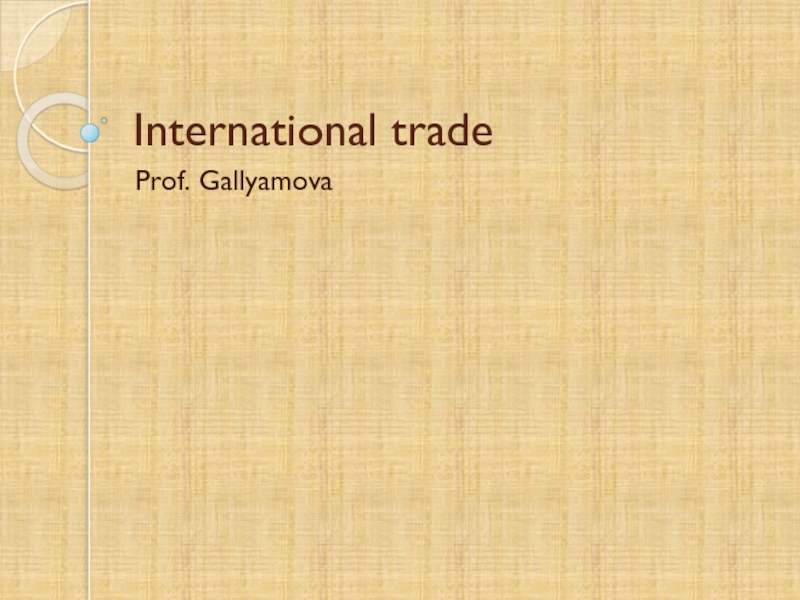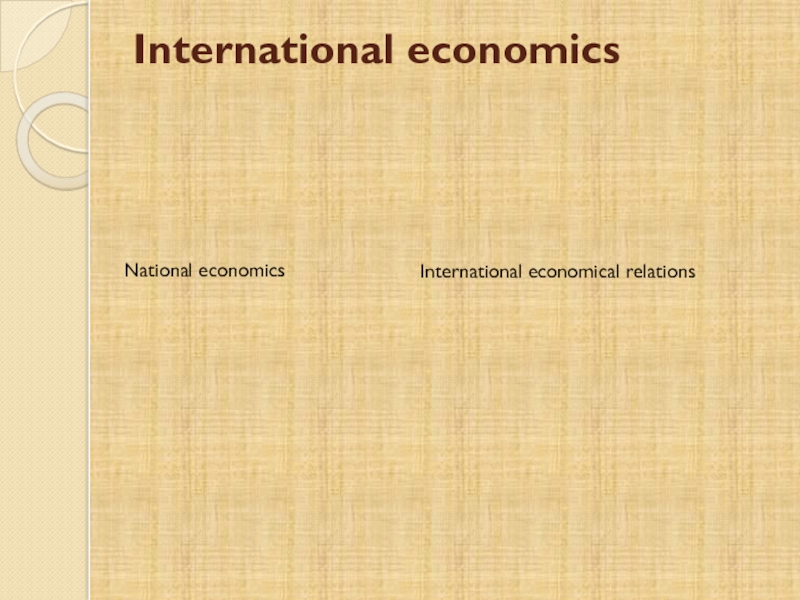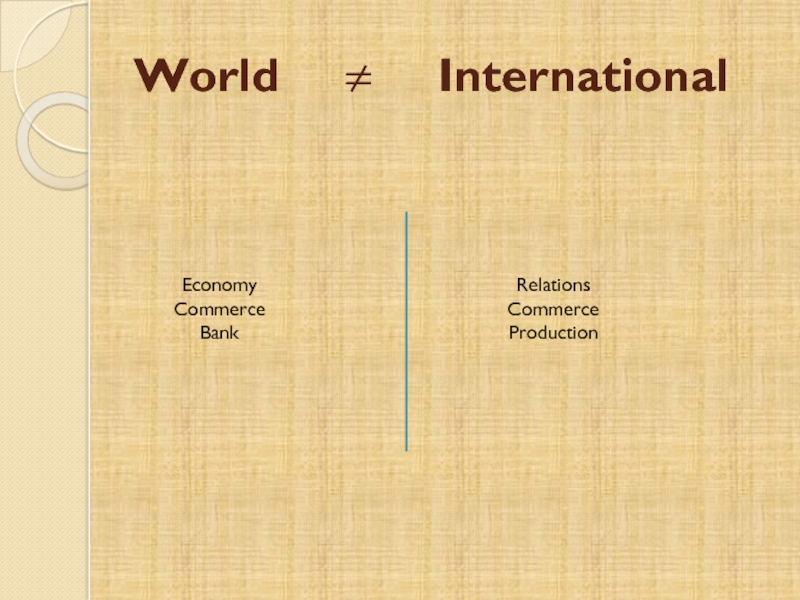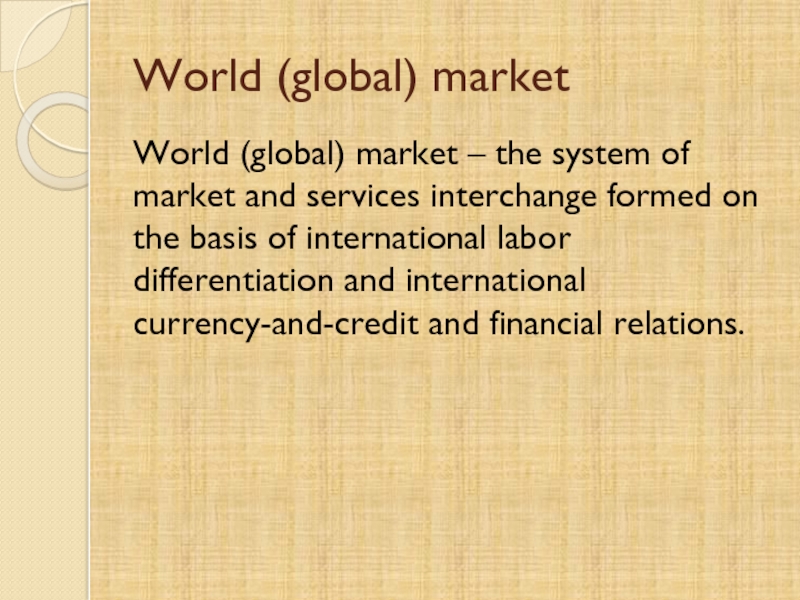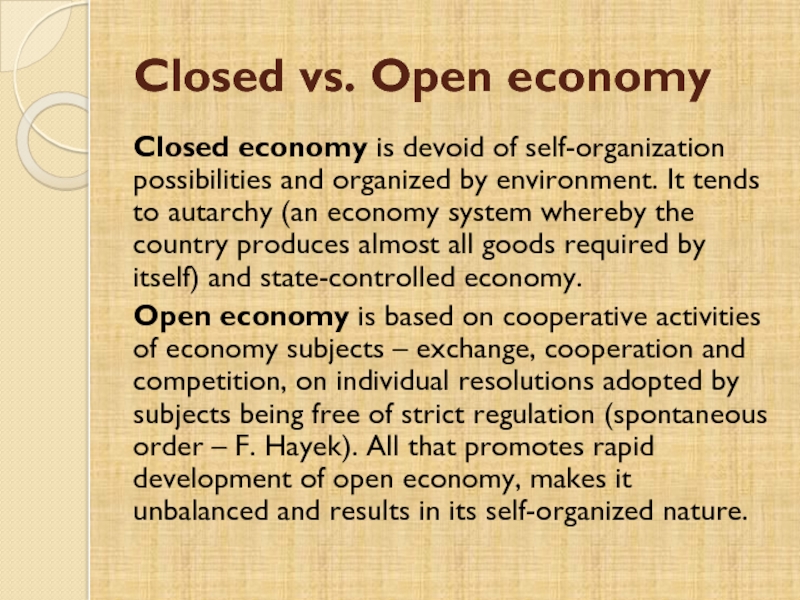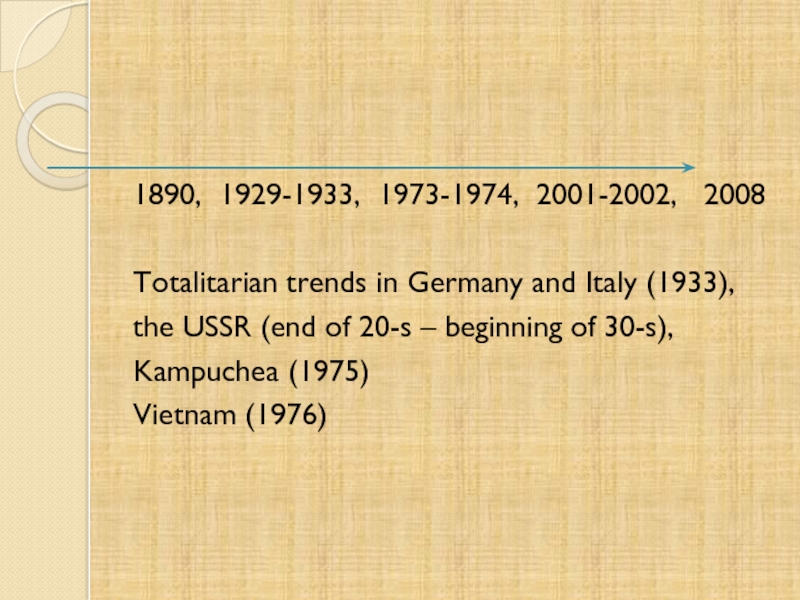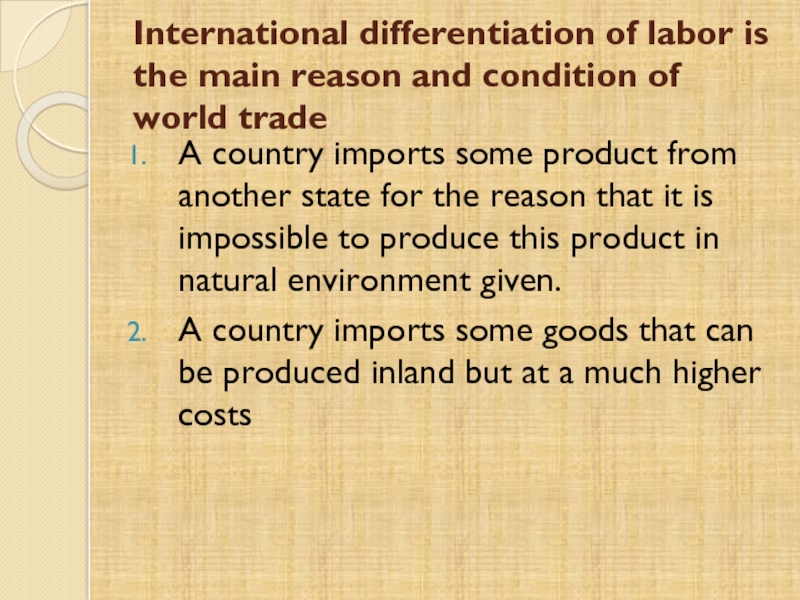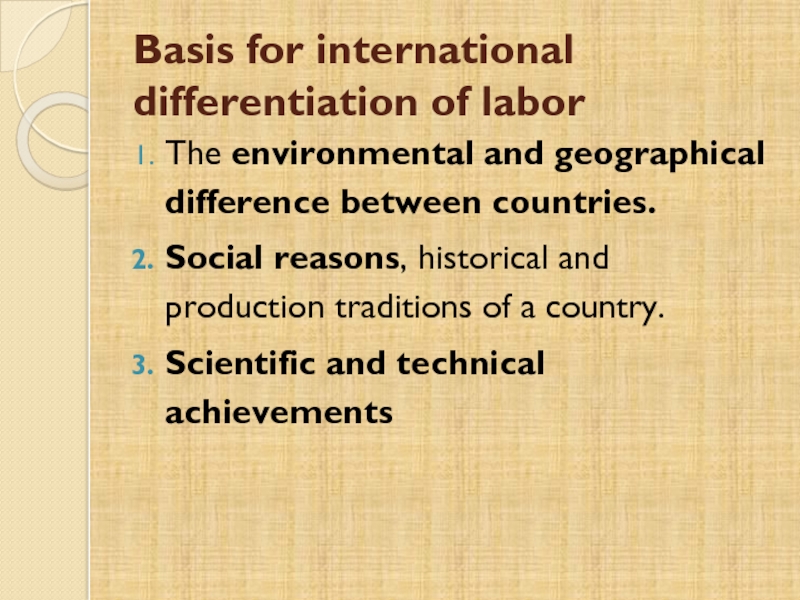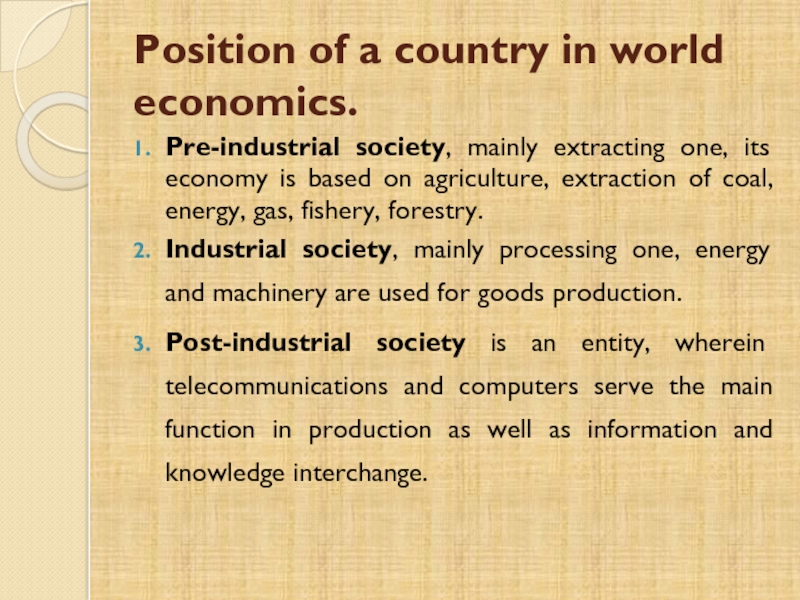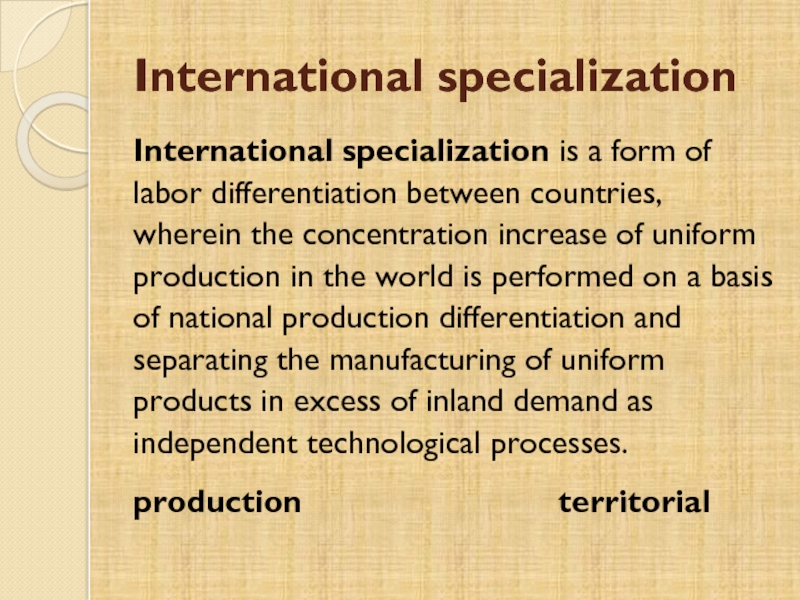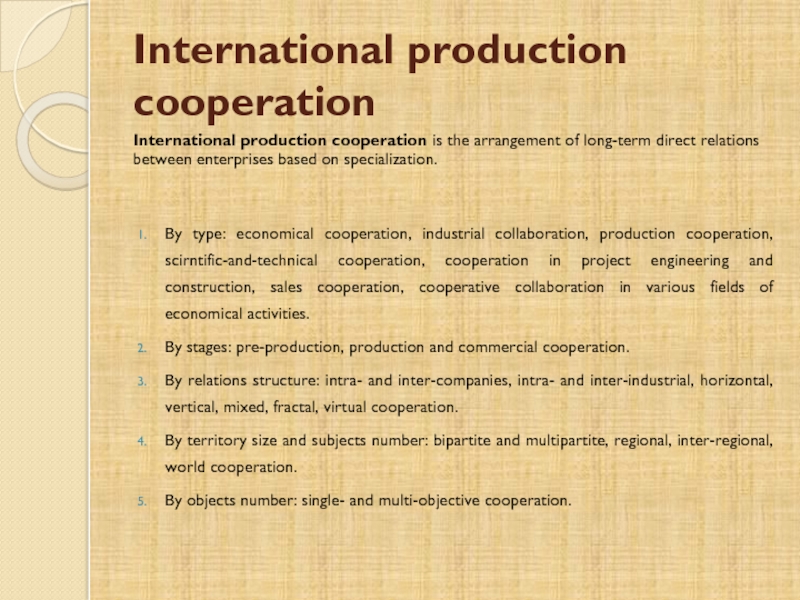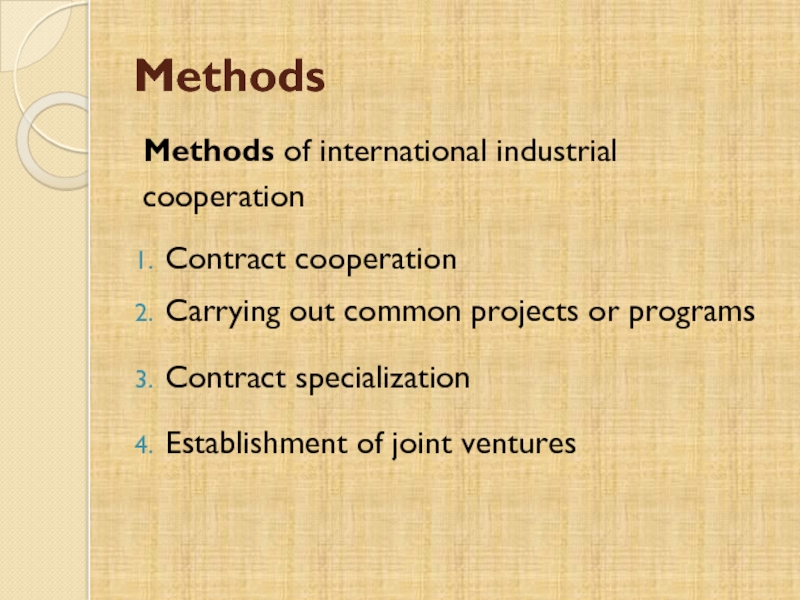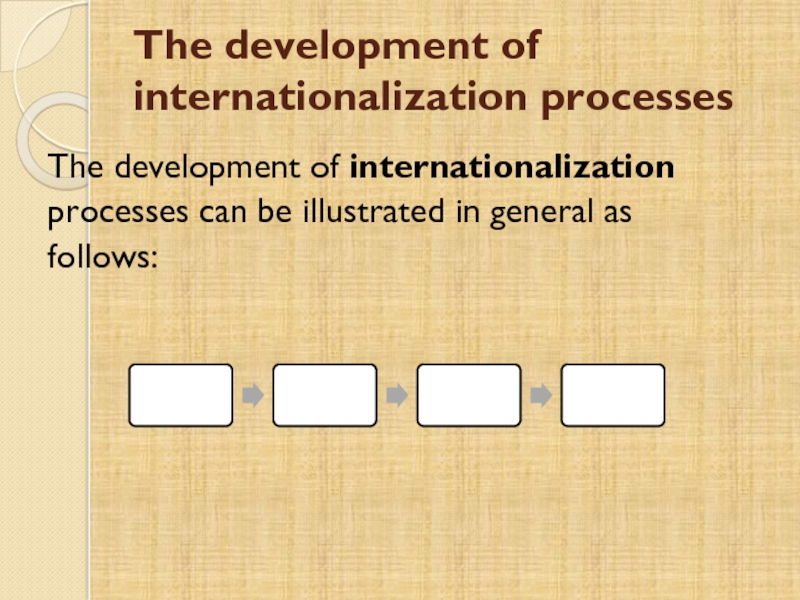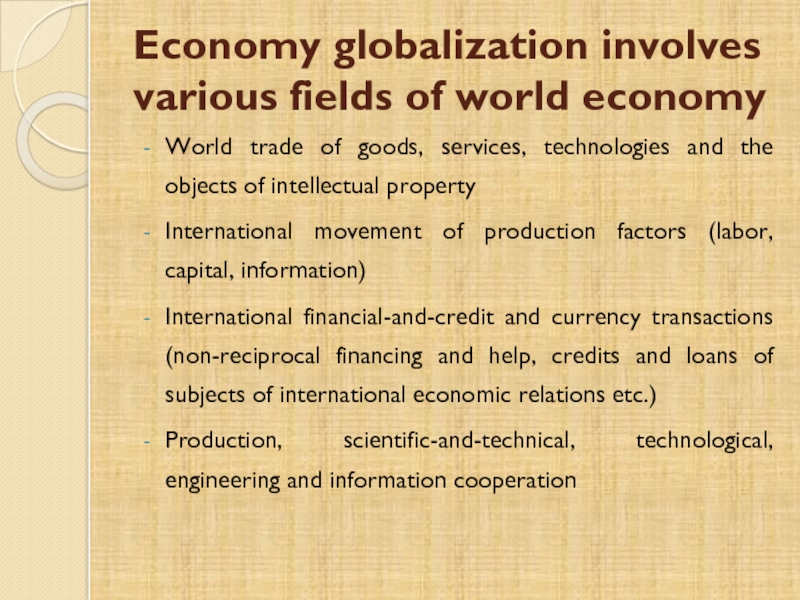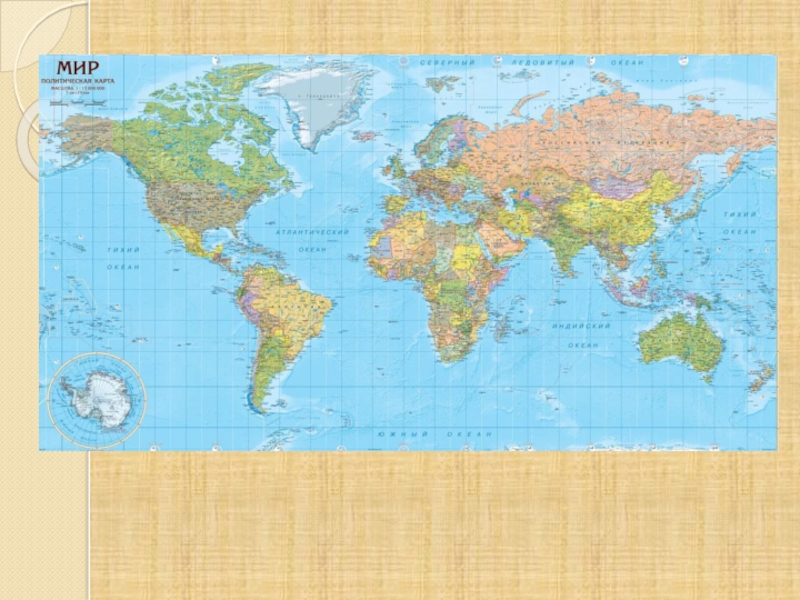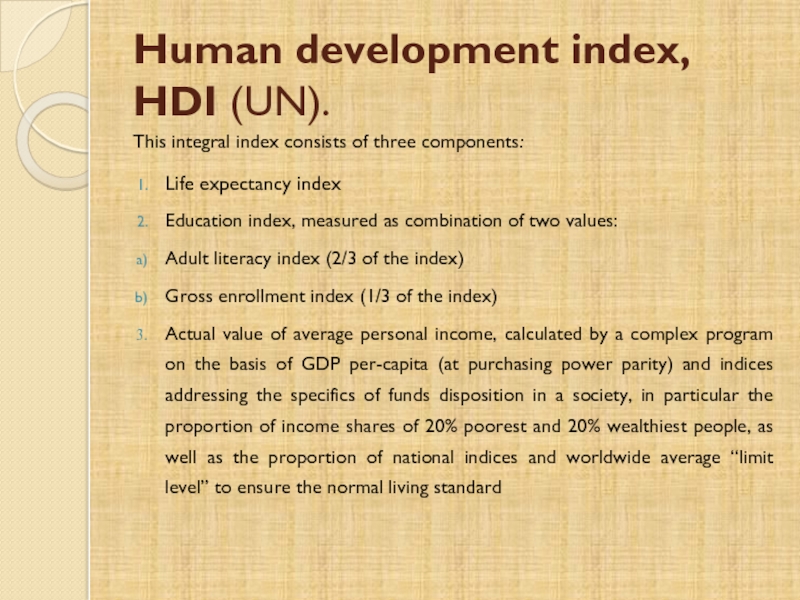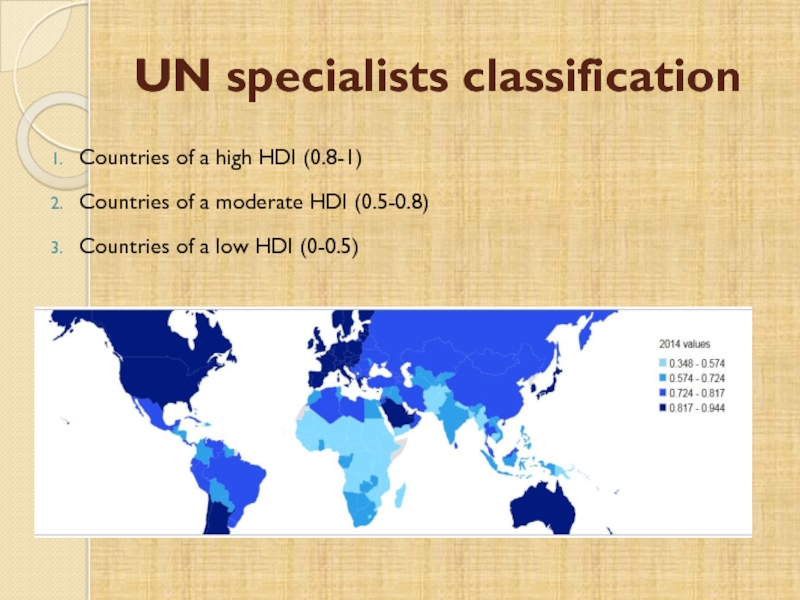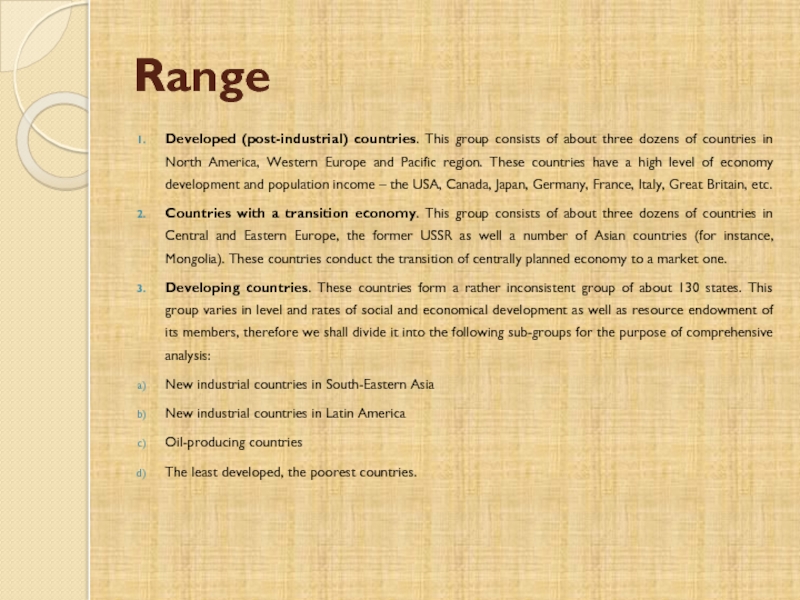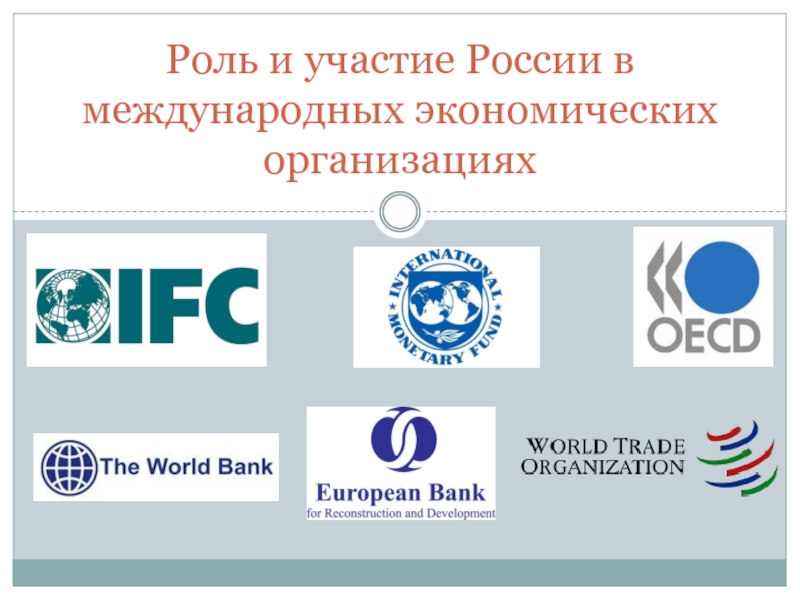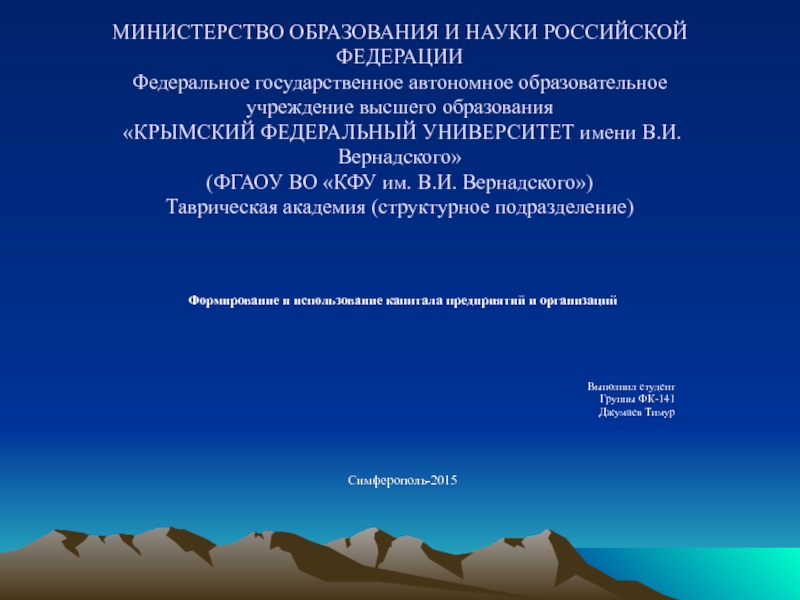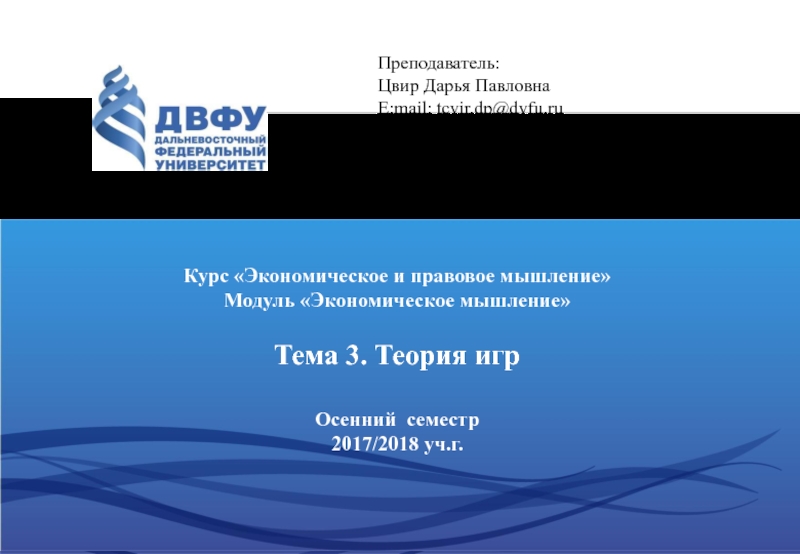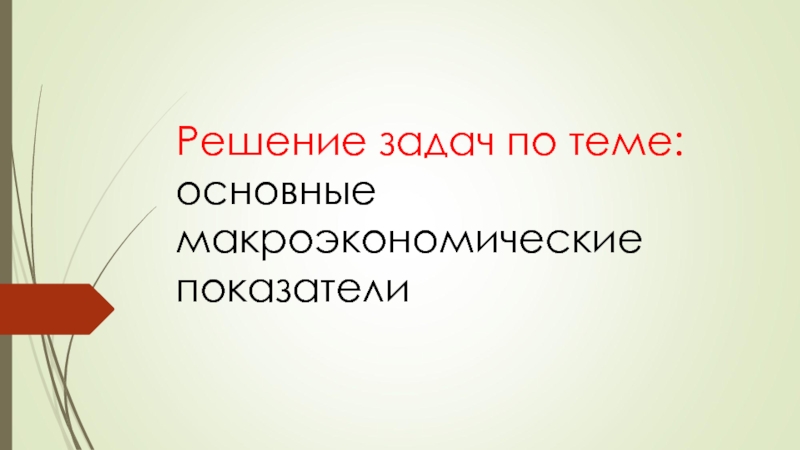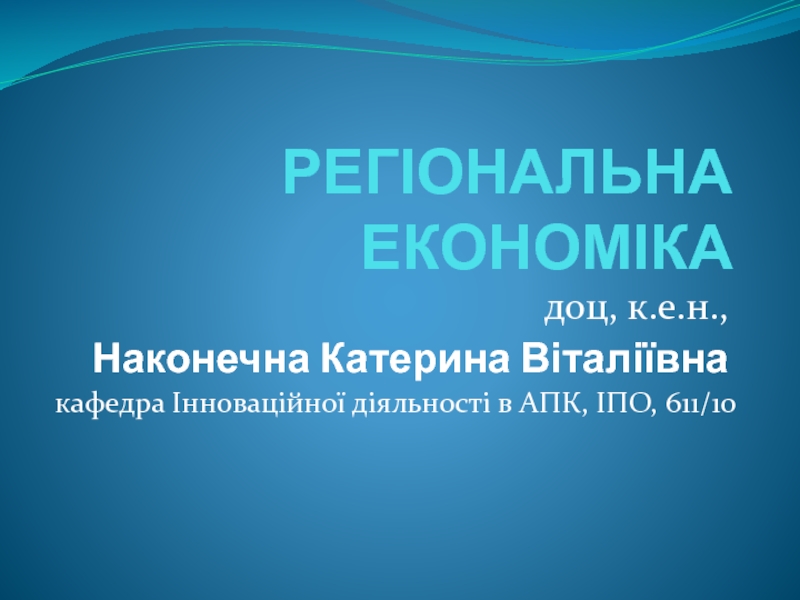- Главная
- Разное
- Дизайн
- Бизнес и предпринимательство
- Аналитика
- Образование
- Развлечения
- Красота и здоровье
- Финансы
- Государство
- Путешествия
- Спорт
- Недвижимость
- Армия
- Графика
- Культурология
- Еда и кулинария
- Лингвистика
- Английский язык
- Астрономия
- Алгебра
- Биология
- География
- Детские презентации
- Информатика
- История
- Литература
- Маркетинг
- Математика
- Медицина
- Менеджмент
- Музыка
- МХК
- Немецкий язык
- ОБЖ
- Обществознание
- Окружающий мир
- Педагогика
- Русский язык
- Технология
- Физика
- Философия
- Химия
- Шаблоны, картинки для презентаций
- Экология
- Экономика
- Юриспруденция
International trade презентация
Содержание
- 1. International trade
- 2. International economics National economics International economical relations
- 3. World ≠ International Economy Commerce Bank Relations Commerce Production
- 4. World (global) market World (global) market –
- 5. Closed vs. Open economy Closed economy
- 6. 1890, 1929-1933, 1973-1974, 2001-2002,
- 7. International differentiation of labor is the main
- 8. Basis for international differentiation of labor The
- 9. Position of a country in world economics.
- 10. International specialization International specialization is a form
- 11. International production cooperation International production cooperation is
- 12. Methods Methods of international industrial cooperation
- 13. The development of internationalization processes The development
- 14. Economy globalization involves various fields of world
- 16. Human development index, HDI (UN). This integral
- 17. UN specialists classification Countries of a high
- 18. Range Developed (post-industrial) countries. This group consists
Слайд 4World (global) market
World (global) market – the system of market and
services interchange formed on the basis of international labor differentiation and international currency-and-credit and financial relations.
Слайд 5Closed vs. Open economy
Closed economy is devoid of self-organization possibilities
and organized by environment. It tends to autarchy (an economy system whereby the country produces almost all goods required by itself) and state-controlled economy.
Open economy is based on cooperative activities of economy subjects – exchange, cooperation and competition, on individual resolutions adopted by subjects being free of strict regulation (spontaneous order – F. Hayek). All that promotes rapid development of open economy, makes it unbalanced and results in its self-organized nature.
Open economy is based on cooperative activities of economy subjects – exchange, cooperation and competition, on individual resolutions adopted by subjects being free of strict regulation (spontaneous order – F. Hayek). All that promotes rapid development of open economy, makes it unbalanced and results in its self-organized nature.
Слайд 6
1890, 1929-1933, 1973-1974, 2001-2002, 2008
Totalitarian trends in Germany and Italy
(1933),
the USSR (end of 20-s – beginning of 30-s),
Kampuchea (1975)
Vietnam (1976)
the USSR (end of 20-s – beginning of 30-s),
Kampuchea (1975)
Vietnam (1976)
Слайд 7International differentiation of labor is the main reason and condition of
world trade
A country imports some product from another state for the reason that it is impossible to produce this product in natural environment given.
A country imports some goods that can be produced inland but at a much higher costs
Слайд 8Basis for international differentiation of labor
The environmental and geographical difference between
countries.
Social reasons, historical and production traditions of a country.
Scientific and technical achievements
Social reasons, historical and production traditions of a country.
Scientific and technical achievements
Слайд 9Position of a country in world economics.
Pre-industrial society, mainly extracting one,
its economy is based on agriculture, extraction of coal, energy, gas, fishery, forestry.
Industrial society, mainly processing one, energy and machinery are used for goods production.
Post-industrial society is an entity, wherein telecommunications and computers serve the main function in production as well as information and knowledge interchange.
Industrial society, mainly processing one, energy and machinery are used for goods production.
Post-industrial society is an entity, wherein telecommunications and computers serve the main function in production as well as information and knowledge interchange.
Слайд 10International specialization
International specialization is a form of labor differentiation between countries,
wherein the concentration increase of uniform production in the world is performed on a basis of national production differentiation and separating the manufacturing of uniform products in excess of inland demand as independent technological processes.
production territorial
production territorial
Слайд 11International production cooperation
International production cooperation is the arrangement of long-term direct
relations between enterprises based on specialization.
By type: economical cooperation, industrial collaboration, production cooperation, scirntific-and-technical cooperation, cooperation in project engineering and construction, sales cooperation, cooperative collaboration in various fields of economical activities.
By stages: pre-production, production and commercial cooperation.
By relations structure: intra- and inter-companies, intra- and inter-industrial, horizontal, vertical, mixed, fractal, virtual cooperation.
By territory size and subjects number: bipartite and multipartite, regional, inter-regional, world cooperation.
By objects number: single- and multi-objective cooperation.
By type: economical cooperation, industrial collaboration, production cooperation, scirntific-and-technical cooperation, cooperation in project engineering and construction, sales cooperation, cooperative collaboration in various fields of economical activities.
By stages: pre-production, production and commercial cooperation.
By relations structure: intra- and inter-companies, intra- and inter-industrial, horizontal, vertical, mixed, fractal, virtual cooperation.
By territory size and subjects number: bipartite and multipartite, regional, inter-regional, world cooperation.
By objects number: single- and multi-objective cooperation.
Слайд 12Methods
Methods of international industrial cooperation
Contract cooperation
Carrying out common projects or
programs
Contract specialization
Establishment of joint ventures
Contract specialization
Establishment of joint ventures
Слайд 13The development of internationalization processes
The development of internationalization processes can be
illustrated in general as follows:
Слайд 14Economy globalization involves various fields of world economy
World trade of goods,
services, technologies and the objects of intellectual property
International movement of production factors (labor, capital, information)
International financial-and-credit and currency transactions (non-reciprocal financing and help, credits and loans of subjects of international economic relations etc.)
Production, scientific-and-technical, technological, engineering and information cooperation
International movement of production factors (labor, capital, information)
International financial-and-credit and currency transactions (non-reciprocal financing and help, credits and loans of subjects of international economic relations etc.)
Production, scientific-and-technical, technological, engineering and information cooperation
Слайд 16Human development index, HDI (UN).
This integral index consists of three components:
Life
expectancy index
Education index, measured as combination of two values:
Adult literacy index (2/3 of the index)
Gross enrollment index (1/3 of the index)
Actual value of average personal income, calculated by a complex program on the basis of GDP per-capita (at purchasing power parity) and indices addressing the specifics of funds disposition in a society, in particular the proportion of income shares of 20% poorest and 20% wealthiest people, as well as the proportion of national indices and worldwide average “limit level” to ensure the normal living standard
Education index, measured as combination of two values:
Adult literacy index (2/3 of the index)
Gross enrollment index (1/3 of the index)
Actual value of average personal income, calculated by a complex program on the basis of GDP per-capita (at purchasing power parity) and indices addressing the specifics of funds disposition in a society, in particular the proportion of income shares of 20% poorest and 20% wealthiest people, as well as the proportion of national indices and worldwide average “limit level” to ensure the normal living standard
Слайд 17UN specialists classification
Countries of a high HDI (0.8-1)
Countries of a moderate
HDI (0.5-0.8)
Countries of a low HDI (0-0.5)
Countries of a low HDI (0-0.5)
Слайд 18Range
Developed (post-industrial) countries. This group consists of about three dozens of
countries in North America, Western Europe and Pacific region. These countries have a high level of economy development and population income – the USA, Canada, Japan, Germany, France, Italy, Great Britain, etc.
Countries with a transition economy. This group consists of about three dozens of countries in Central and Eastern Europe, the former USSR as well a number of Asian countries (for instance, Mongolia). These countries conduct the transition of centrally planned economy to a market one.
Developing countries. These countries form a rather inconsistent group of about 130 states. This group varies in level and rates of social and economical development as well as resource endowment of its members, therefore we shall divide it into the following sub-groups for the purpose of comprehensive analysis:
New industrial countries in South-Eastern Asia
New industrial countries in Latin America
Oil-producing countries
The least developed, the poorest countries.
Countries with a transition economy. This group consists of about three dozens of countries in Central and Eastern Europe, the former USSR as well a number of Asian countries (for instance, Mongolia). These countries conduct the transition of centrally planned economy to a market one.
Developing countries. These countries form a rather inconsistent group of about 130 states. This group varies in level and rates of social and economical development as well as resource endowment of its members, therefore we shall divide it into the following sub-groups for the purpose of comprehensive analysis:
New industrial countries in South-Eastern Asia
New industrial countries in Latin America
Oil-producing countries
The least developed, the poorest countries.
